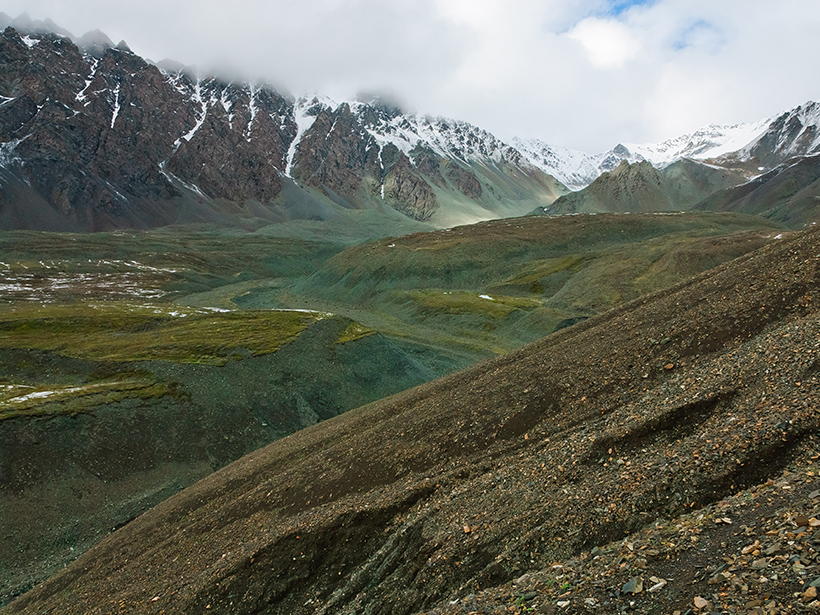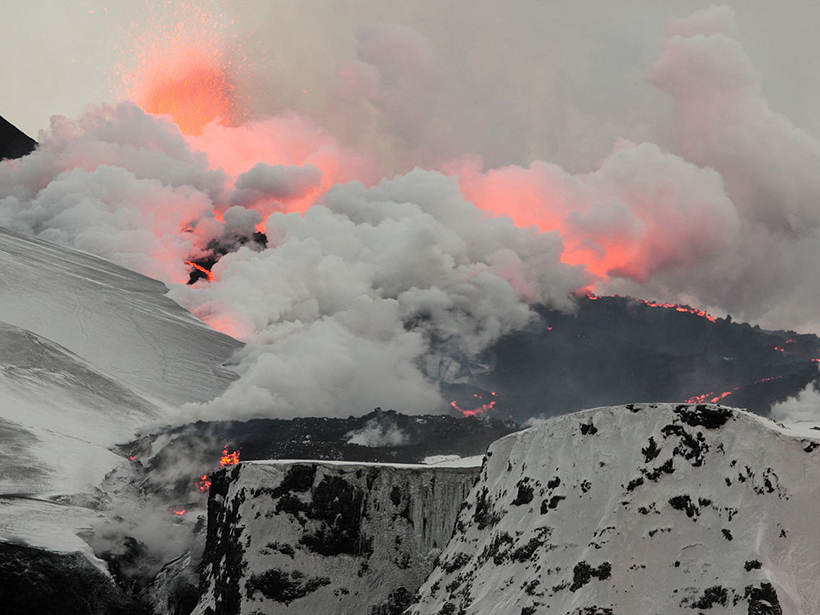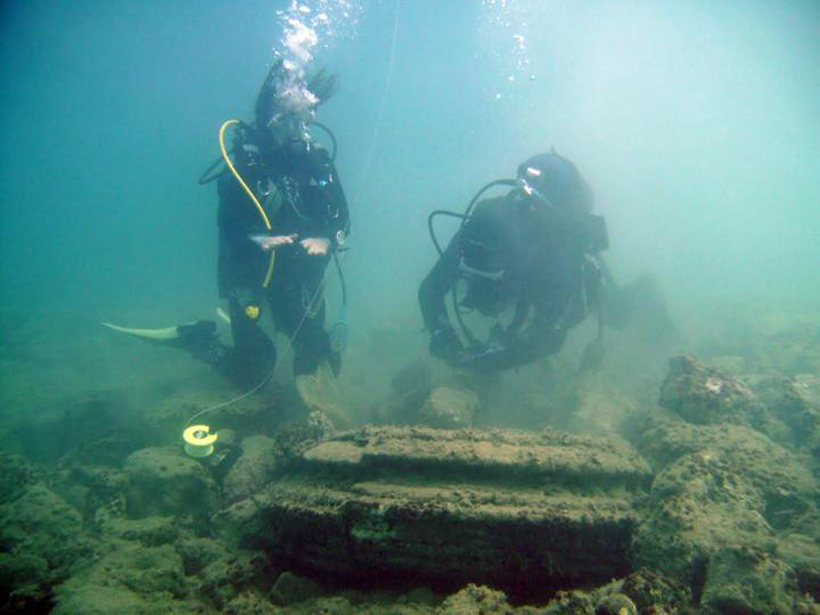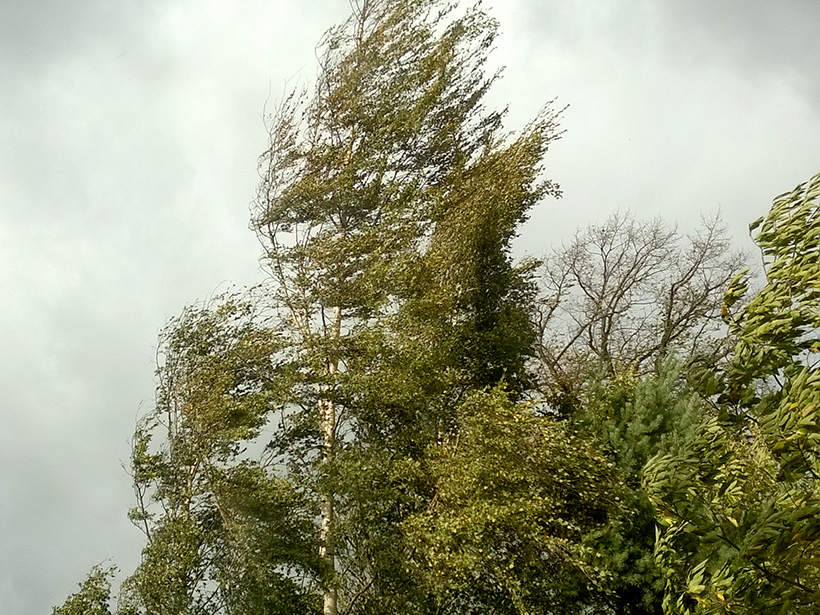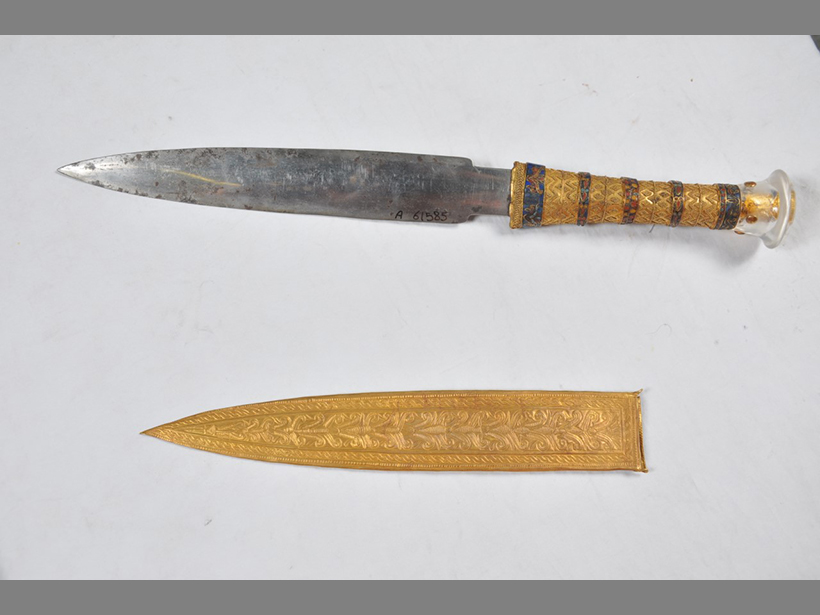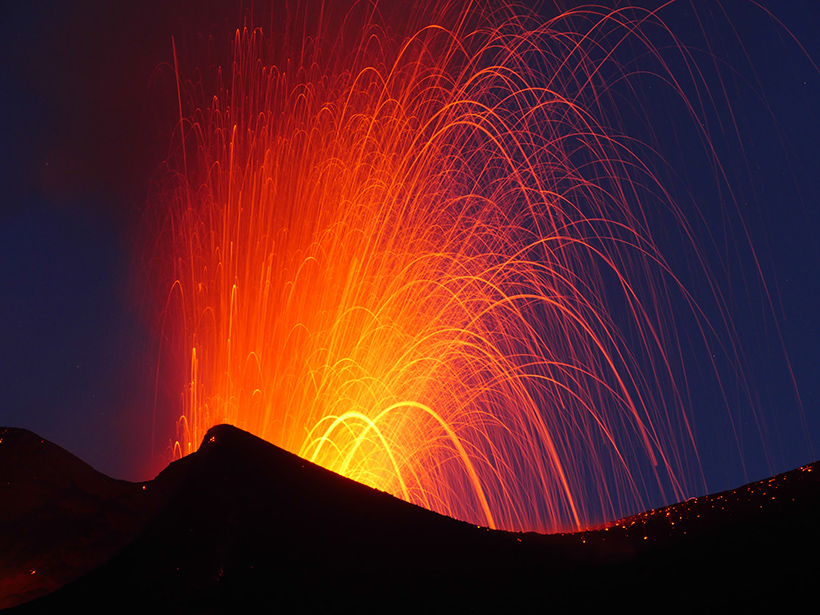Tiny yet stable magnetized particles created by microbes long ago could help scientists better determine the strength and orientation of ancient magnetic fields.
E. Deatrick
Elizabeth Deatrick, a science-writing intern at AGU, graduated in 2015 from Boston University with an MS in Science Journalism. She has also interned with the National Audubon Society. Elizabeth writes mostly about geophysics, ecology, and biology.
Surveying Alaskan Minerals from Afar
By using hyperspectral imaging, researchers test their ability to find copper in remote areas.
Eyjafjallajökull Gave Lava and Ice Researchers an Eyeful
New insights from the 2010 eruption may help volcanologists determine how glaciers shaped ancient lava flows.
Stars and Swells Guide a Polynesian Canoe Around the World
Modern oceanographers and ancient navigators rely on similar waves to study the world's oceans.
Silty Streams Muddy Freshwater Conservation Issues
Throughout the Pacific Northwest, dirt from unpaved roads can clog streams, threatening fish habitats. Scientists have only a murky understanding of how to clear up these turbid waters.
"Sunken City" Was Really Made by Microbes
What scientists thought was a sunken Greek city turns out to be the fossils of an ancient hydrocarbon seep from several million years ago.
Humans Misread Wind Speeds, Skewing a Major Hazards Database
Weather spotters who report storm measurements and observations to a U.S. national compendium of storm data often exaggerate winds speeds—by about one third, on average.
Pharaoh's Iron Dagger Made from a Meteorite, Study Confirms
After examining the metal under bombardment by X-rays, scientists find the composition of King Tutankhamun's knife blade matches "iron of the sky."
Storms Cause Infrequent Turbulence for Aircraft, New Study Finds
Scientists using lightning sensors to automate air-turbulence detection have found evidence that storms jostle aircraft much less than previously thought.
As Lava Flows, Refined Model Predicts a Path
Simulations that melded volcano topography, satellite observations, and virtual lava accurately anticipated the destruction of villages 18 months ago by Cape Verde's Fogo volcano.


